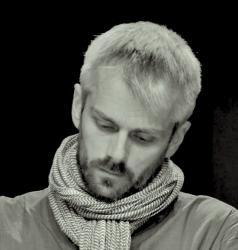
Photographer Art Bicnick captured these stunning images of northern lights, technically known as Aurora Borealis, at play over Iceland this Sunday night — on a full moon. As noted since the thirteenth century, the coincidence of the two phenomena is rare.

The term “northern lights” first appeared in writing in the thirteenth’s century manuscript Konungs skuggsjá, the King’s Mirror, a book of instructions and advice written on behalf of a Norwegian king for the prince, his son. In Laurence Marcellus Larson’s 1917 translation, the father says that “these northern lights have this peculiar nature, that the darker the night is, the brighter they seem; and they always appear at night but never by day, — most frequently in the densest darkness and rarely by moonlight.”
The text goes on to describe the phenomenon in magnificent detail: “In appearance they resemble a vast flame of fire viewed from a great distance. It also looks as if sharp points were shot from this flame up into the sky; these are of uneven height and in constant motion, now one, now another darting highest; and the light appears to blaze like a living flame.”
Sparks shooting as from glowing iron
By way of metaphor, the author goes on to provide vivid images: “While these rays are at their highest and brightest, they give forth so much light that people out of doors can easily find their way about and can even go hunting, if need be. Where people sit in houses that have windows, it is so light inside that all within the room see each other’s faces. The light is very changeable. Sometimes it appears to grow dim, as if a black smoke or a dark fog were blown up among the rays; and then it looks very much as if the light were overcome by this smoke and about to be quenched. But as soon as the smoke begins to grow thinner, the light begins to brighten again; and it happens at times that people think they see large sparks shooting out of it as from glowing iron which has just been taken from the forge. But as night declines and day approaches, the light begins to fade; and when daylight appears, it seems to vanish entirely.”
The text goes on, providing a fascinating example of a proto-scientific spirit in the middle ages. Meanwhile, the northern lights just keep on rolling.
P.S. According to the Met Office’ Aurora Forecast, which has just been brought to our attention, high aurora activities can be expected again on Thursday night.
Buy subscriptions, t-shirts and more from our shop right here!

















